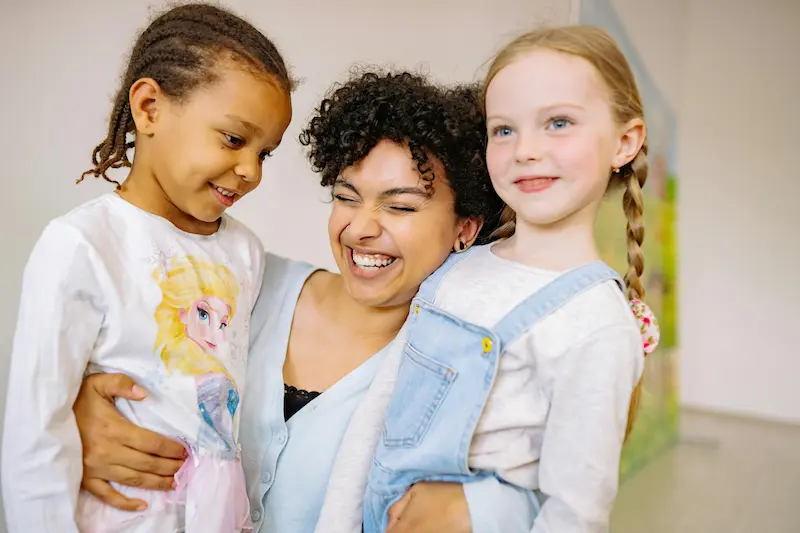settings
children
With Famly since
How has lockdown and post-lockdown affected children’s wellbeing?
For the many families already vulnerable before the pandemic, difficult circumstances and experiences will have been intensified as a result of having to stay home during lockdown.
In a recent survey and subsequent report, Child Poverty Action Group and the Church of England noted that 8 in 10 respondents acknowledged a ‘significant deterioration in their living standards due to a combination of falling income and rising expenditure’.
Many families struggled to pay for necessities such as utilities, housing and products such as nappies, baby products and children’s clothes. And that’s before we consider the non – financial impacts such as mental and physical health problems, pressures from extra care responsibilities, or relationship issues that were exacerbated by the stress of financial difficulties.
What’s more, reduced access to healthcare and other advisory services made it more difficult for lots of families to receive the support they needed.

Understanding a child’s ‘lived experiences’
What are the key issues that remain the most substantial risks for children’s well-being and safety?
- Abuse and neglect for ‘unseen’ children
- Increased incidents of domestic abuse/violence
- Poor mental health, in both children and adults
- Online risks, including online child criminal exploitation
- Absence or delays in routine health appointments, particularly dental health
- Poor language development and poor educational outcomes
- Homelessness or risk of eviction
While understanding these themes are important, it also matters that you find the time to consider every family’s circumstances individually.
That’s why it’s essential that we take time to acknowledge children’s ‘lived experience’, so that we can determine the extent to which these experiences have impacted their wellbeing, or compromised their safety.
To this point, it’s worth bearing in mind that not all abuse comes from experiencing deprivation or poverty. Domestic abuse and violence, for instance, is prevalent for a wide range of cultures and in all areas of society.
The threat of homelessness is a reality for many families. Figures from the Children’s Commissioners latest report No Way Out identifies 420,000 children living in families at risk of eviction in England alone.
With these and other factors in mind, early years settings should be focused on strategies that provide the right support to children. Here’s how.

The big ideas
Identifying and responding to levels of need
One of the most unique and valued strengths in the early years is your knowledge of children, and the positive impact that has on them when developing nurturing relationships. This means that you are best placed to identify their needs and to understand appropriate interventions that respond to this identified need. For children coming back to school and childcare, giving them time to readjust and re-establish those relationships with trusting adults is essential.
Taking time to seek out information about children’s lived experiences, their family circumstances and what potentially may have changed or is likely to change for them going forward is critical.
Just as important is giving opportunities to find out enough information about children who are new to a setting. This helps to build a picture of the child’s needs that takes into account a knowledge of family backgrounds and wider involvement with other services, agencies or places where they may already be receiving help or support.
Here are some thoughts on how we can identify and respond to children in need of help and protection.
How to identify safeguarding concerns
Levels of need – thresholds
Familiarise yourself or — as a designated safeguarding lead — your team’s understanding of levels of need for the children in your setting. These levels of need are often referred to as the ‘threshold of need’, and each Local Authority in England has their own version to refer to in relation to a child or young person’s identified needs.
More importantly, thresholds are used to identify the appropriate interventions that should follow as a result of the recognised need. This will include interventions such as early help as well as cases where a child needs protection and services like children’s social care need to be involved.

Responding to disclosure
Be prepared for children to disclose abuse or neglect.
Supportive relationships will lead children to share their experiences with others. Good practice when responding to disclosure involves sensitive and professional responses from adults. This requires practitioners to have up-to-date knowledge of child protection, skills that provide emotional interactions and support for children, and a clear understanding of how to follow up on these disclosures, such as reporting and information-sharing.
Being professionally curious
Be ready to ask parents about signs that indicate a child has been abused. This could be an old injury or bruises that you would have noted had the child been in your setting at the time.
Without the usual chronological processes such as recording concerns, identifying concerns might require practitioners to be actively but professionally inquisitive in order to establish what’s happened to a child. Unexplained or suspicious signs of abuse must be challenged and pursued so that you can take action if needed.
Responding to safeguarding concerns
Once identified, interventions for a child at risk of significant harm must be our main focus. But we should also be ready to identify and respond to children who will benefit from early help too.

The importance of early help
Understanding early help, its purpose and the valuable role that it plays in safeguarding children is fundamental for us in the early years. When working in the context of early help we are identifying those children who are at risk of poor outcomes and acting to address this sooner rather than later.
The recent lack of identification for those who would benefit from early help will mean that there is a lot of catching up to be done for some children. Early help requires you to assess a child’s needs and put a plan in place that will make a difference to the child. This involves the child’s parents, who must give consent for the process to take place and can be delivered with single or multi-agency involvement depending on the needs of the child.
Engaging parents
Consider that for some parents their needs, which may be significant, might not always be obvious. Take time to have conversations and use existing relationships with parents to establish how to facilitate the right help for their child.
Be mindful that through no fault of their own, some parents will feel guilt or embarrassment that they have not been able to meet their children’s needs as a result of the pandemic. Some might struggle to accept help, or become anxious of getting services involved. They may see this as a threat, or that people are judging or criticising them. This is something that you need to approach delicately.
Partnership working is key, sharing information is vital
Building upon good and effective relationships with others, such as multi-agency practitioners, will give you a bigger picture in identifying concerns and supporting interventions that address children’s needs. Reach out and collaborate with professionals who are also working with children in your setting to quickly and efficiently address these needs.
Children in need or in need of protection
At some stage, you’ll need to use your professional judgments to establish whether or nor a child may be suffering or is at risk of significant harm.
Regularly review or update your child protection policies or arrangements and be aware that for some children their level of need may have escalated, and this will require you to make a referral to social care. That’s exactly why you need to to know the children you work with.
Working with statutory services
We know that services are struggling to meet demand right now, particularly children’s need for social care. As we move forward, it’s critical that we don’t allow this to compromise our own responses when safeguarding and protecting children. That includes our judgements in acknowledging the extent of harm, or length of time a child experiences harm.
Children’s lived experiences are very real, and for some, they are dangerously harmful. You should always be prepared to challenge others who do not see your concerns from the child’s perspective.
Try learning journals for free
Add observations, and build digital learning journals to share with families instantly. All with your completely free 14-day trial.
Get started









